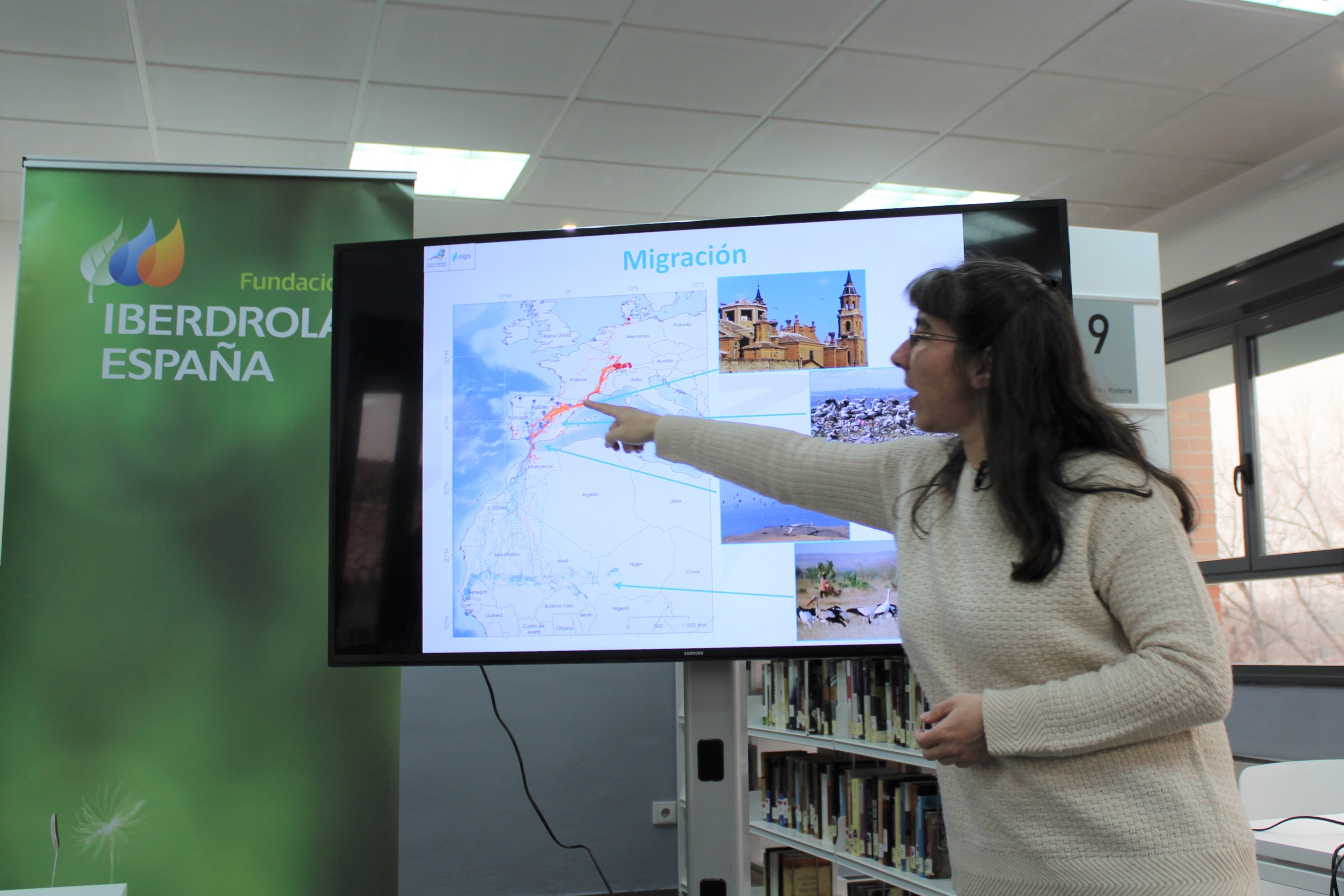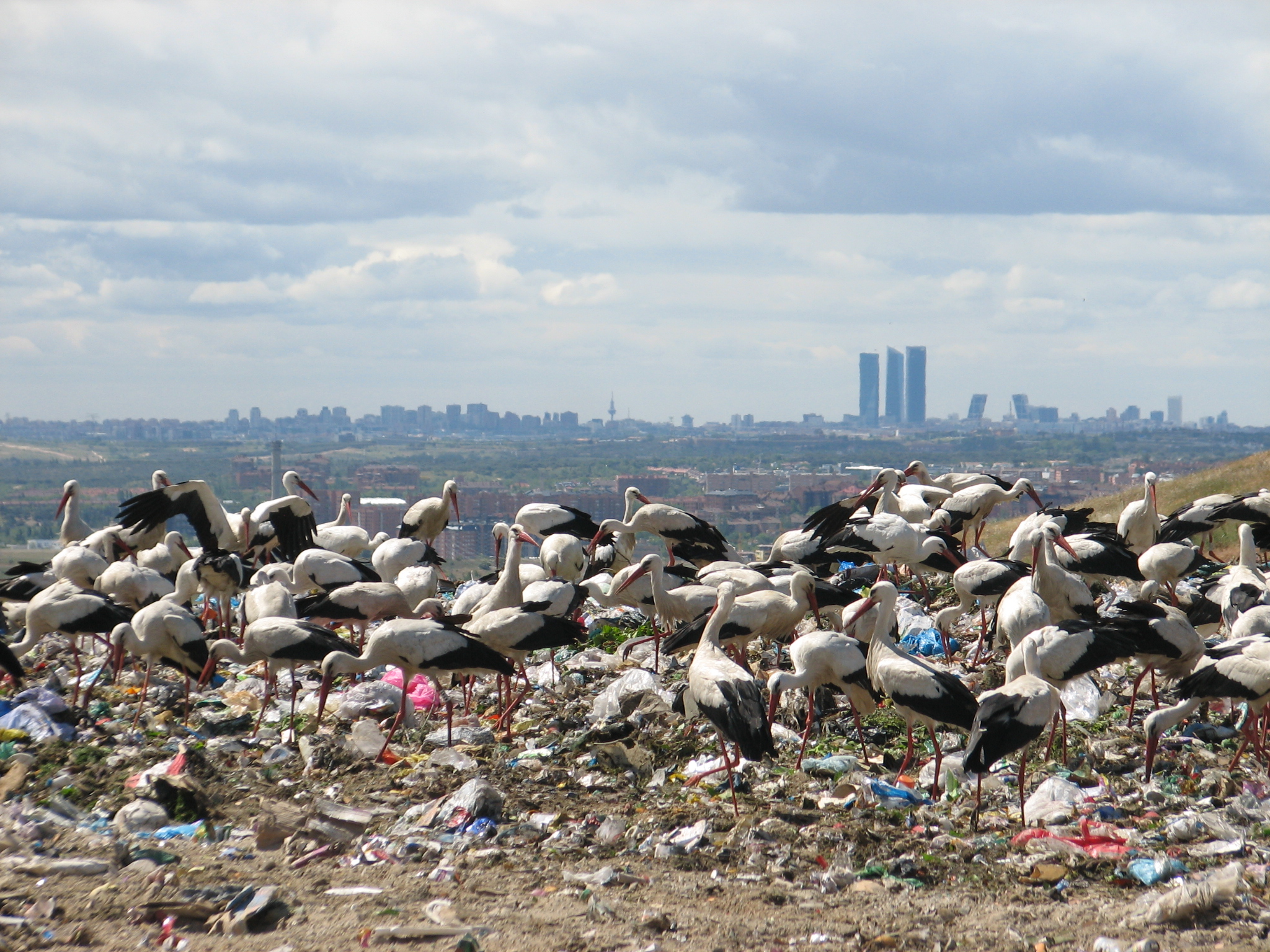The SEO/Birdlife Migra Programme reveals changes in the migratory behaviour of the white stork
- Today sees the presentation of “The Migration and Spatial Ecology of the White Stork in Spain”, the fifth paper published by the Migra Programme set up by the SEO/Birdlife, which has worked in partnership with Fundación Iberdrola España since 2011
- It compiles the results from the GPS ringing of 79 storks across Spain and Central Europe over seven years, with almost three million locations
- Adult white storks now overwinter in Spain, mainly feeding from rubbish dumps and rice fields, while their young continue to migrate to the Sahel, thousands of kilometres away from their nests
- The white stork has altered its migration over the past few decades due to the global changes resulting from human behaviour, which have provided the stork with new habitats in which it can feed during the winter
Madrid, 03/02/2020. For villages across Spain, the white stork is an iconic bird, its nests can be found on every church roof in many parts of the country. It had already been assumed that storks had stopped returning in time for the feast of St Blaise (contrary to a traditional Spanish phrase which suggests this will happen every year), since the migratory habits of this popular bird changed some decades ago, with increasing numbers of storks overwintering in Spain and returning to their nests earlier. However, on today’s feast of St Blaise, SEO/Birdlife aims to provide answers to all the questions about this popular species, thanks to an extensive and detailed paper on the migration and spatial ecology of the Spanish and Central European populations of the white stork.
Today sees the presentation of the paper “The Migration and Spatial Ecology of the White Stork in Spain”, an exhaustive study that reflects seven years of work and reveals the movements of the white stork throughout its annual cycle: the breeding and wintering seasons and migration between these areas.
It is thanks to this study that we have moved from a position of knowing very little about the movements of Spanish populations of the white stork, to being in possession of a detailed knowledge regarding their location throughout the year. Large amounts of information have been gathered and analysed, demonstrating a clear change in the migratory behaviour of the white stork in Western Europe. In fact, this species has proved to be an ideal model for demonstrating how human-induced changes across the globe (the production of large amounts of waste, large areas being used for irrigated crops, etc.) are leading to profound changes in the environment and in animal behaviour.
Climate change is gradually transforming habitats, putting at risk the distribution, migration and phenology of some birds, who are forced to adapt in order to continue to survive. Species that just a few decades ago would overwinter in Africa are now remaining in Spain. At the same time, other species that used to overwinter in Spain are now moving further north. “In this situation, we need to look closely at the science and at studies such as this one. Only by arming ourselves with knowledge can we put into place actions based on nature to ensure the appropriate ecological transition and to slow down the current climate crisis,” says Asunción Ruiz, executive director with SEO/BirdLife.
Adult storks no longer migrate
Data from the GPS rings shows that the wintering areas of the Spanish population of adult white storks are now mainly in Spain. In fact, the number of sedentary birds has seen a marked increase, and the distances migrated have become shorter. In addition, a significant number of Western European storks return to Spain in the autumn, where they remain. This suggests that there are increasing numbers of white storks in Spain during the winter, meaning that they go back to their nests earlier.
Discussing the importance of these studies, Fernando García, chairman of Fundación Iberdrola España, explains, “Since its inception, the Migra Programme has had the dedicated support of Fundación Iberdrola España. We are delighted with what they have achieved and with the large amounts of data that they have gathered on over thirty species, throughout the period of our partnership with them. The publication of studies such as the one on the white stork represents the fulfilment of one of the foundation’s aims: to promote the communication of activities aimed at improving biodiversity and raising awareness of the negative effects of global change”.
Key findings of the study
Support from the Swiss organisation Storch Scheiz, the Doñana Biological Station, the Max Planck Institute for Ornithology (Germany) and the Research Group in Health and Biotechnology (Sabio) at IREC (the Spanish Institute for Game and Wildlife Research), have been invaluable in studying this species. The writers are renowned researchers in the field of bird migration, and specifically in the migration of the white stork.
The paper presents the results from 79 white storks ringed with remote monitoring devices (34 adults and 45 chicks), of which 53 were ringed in Spain (in 9 of Spain’s autonomous communities) and 26 in Central Europe (24 in Switzerland, 1 in France and 1 in Germany) between 2012 and 2017. This took place within the framework of the SEO/ Birdlife Migra Programme, producing almost three million locations in the seven years of the study. The information is also supplemented with an analysis of ringing data banks with metal rings and darvic rings (60,568 retrievals between 1910 and 2018), and counts of white storks flying over the strait of Gibraltar.
The storks of Rivas-Vaciamadrid
The presentation of this ground-breaking paper is taking place in Rivas-Vaciamadrid, thanks to the involvement of its town council. It is also one of the most important locations in Europe for the species. In part, this is because it has a large population that breeds in the area that we will be able to enjoy following the presentation. However, and perhaps more importantly, the area has seen the development of a wintering population of thousands of storks from all over Western Europe, who spend a few months here and are able to find abundant food and suitable resting areas.
In fact, several of the storks ringed with GPS in other parts of Spain have spent the winter in Rivas-Vaciamadrid. For example, ‘Blas’, a white stork from Pinilla del Valle in the mountains around Madrid, was ringed in 2012 with a transmitter as part of the Migra Programme and spent half a year (August to January) in this town and its surroundings.
Migra Programme
The Migra programme was launched in 2011 by SEO/BirdLife in partnership with Fundación Iberdrola España. It uses the latest geolocation and remote-monitoring technologies to learn about bird movements in greater detail, both within Spain and beyond. This initiative enables information to be gathered on their migratory start and end dates, the places where they stop and their feeding points, the time it takes them to make these journeys, whether routes are repeated in the spring and autumn migrations, the main areas where they overwinter and disperse, and whether the routes are the same year on year. Fundación Iberdrola España is working with this programme within the framework of its activities to support biodiversity, one of its main areas of activity.
To date, the Migra Programme has ringed 1,083 birds from 32 different species, and useful information has been gathered from 633 birds from 31 different species. This programme has over 300 partners and 50 partner organisations from Spain and abroad.





